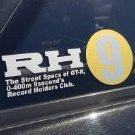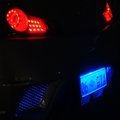Group A Thread
Announcements
-
Similar Content
-
Latest Posts
-
well if you want space and sound the Chrysler is the go.
-
By No Crust Racing · Posted
Yeah boiiiiiii -
By Dose Pipe Sutututu · Posted
Fark this... mental health day it is tomorrow. Booked Luddenham lol Is the clutch fked? yep Do I need to fix that in tank venturi? yep Will I do any of the above? No -
Dye *should* work on the _cloth_ but not on the hard vinyl. That said, it's a mixture of both of these things. You probably have a sedan, and want a coupe as the coupe got all the black interior and the sedan is silver. I was planning on just taking the lot to a trimmer as you've noticed it's a mix of cloth, hard plastic, and bits of metal that need to change colour so I wager you will need all sorts of different, complimentary skills to actually make it work.
-
By soviet_merlin · Posted
This one is coming up on the weekend! Fingers crossed the weather holds up. I have never done this one so it better work out this year
-










Recommended Posts
Create an account or sign in to comment
You need to be a member in order to leave a comment
Create an account
Sign up for a new account in our community. It's easy!
Register a new accountSign in
Already have an account? Sign in here.
Sign In Now